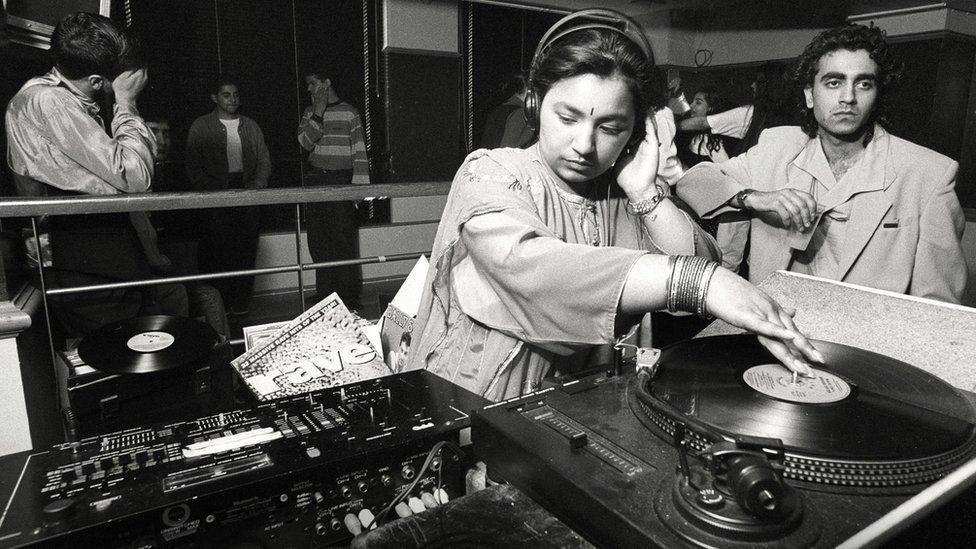In pictures: Bradford's Bhangra daytimers
- Published

In the 1980s Bhangra music was sweeping across the UK as artists such as Heera, Alaap and Apache Indian fused traditional Punjabi folk songs with western pop and reggae.
But many of those desperate to be part of the new craze came from conservative families who would never let their children go to nightclubs.
Determined not to miss out, hundreds of teenagers skipped school or college to see their favourite bands and DJs at nightclubs hired for the afternoon.
The events became known as "daytimers" and, in the north of England, Bradford was at the epicentre of the underground scene.
Moey Hassan, 53, helped organise many of the events in Bradford.
"Parents were very conservative back then, they would never allow their daughters or sons go to a nightclub," he said.
"So it started out as a daytime thing because there was a huge market for college kids who wanted to experience the night life but in the middle of the afternoon.
"People were leaving the house in their school uniform but with a carrier bag with some jeans and a funky top inside saying they were going to be studying history or something.
"We would kick off at midday and they would party till 4pm and then go home for tea, pretending they had had a good day at college."
Rani Kaur, who was known as DJ Radical Sista, said daytimers helped fill a hole in the cultural life of young Asians and give them a sense of identity.
"At the time there was very little in terms of Asian cultural stuff in the mainstream, we would get the odd programme on TV but it was more geared to the older generation," she said.
"There was a gap and there was a thirst for something to fill it, so daytimers just rocketed.
"It was about creating a new identity for Asians in the UK that had not existed before.
"Bhangra records were very hard to get hold of, you could get Bollywood but Bhangra was hard to get hold of so these were the only places you could go to hear it regularly."
Mr Hassan said to begin with the events were a little "awkward" but as time went by crowds of up to 300 people would turn up.
He said the events became so popular they evolved in to night time events held at bigger and bigger venues.
"When we stated hiring places like Maestros of an evening we would get 3,000 people," he said.
"We would have coaches coming from places like Birmingham, Leicester, Derby and Bolton."
Photographer Tim Smith spent several months capturing the emerging scene and his pictures feature in the Above the Noise exhibition at the National Science and Media Museum in Bradford.
He said the Bhangra daytimer phenomena was relatively short-lived.
"It perhaps only last about five or six years," he said.
"When the Mela came [in 1988] it almost gave the Asian community the confidence to say 'We are here and we want to celebrate our culture' and to do that in a way that enabled them to share the culture with the wider community."
Above the Noise runs from 15 March to 19 June.
This article was created as part of We Are Bradford - a BBC project with the people of the city to tell the stories which matter to them.
- Published20 July 2017